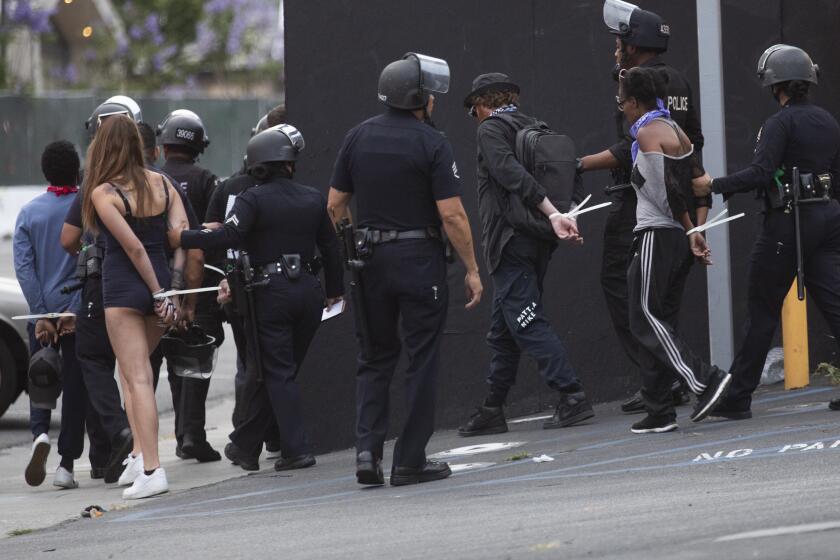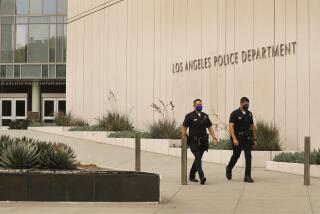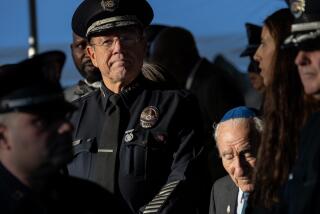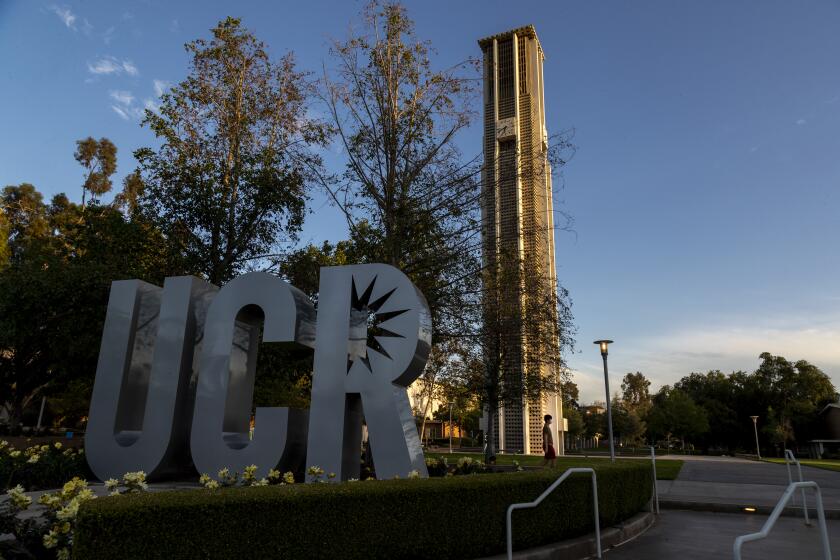Prosecutors review actions of 4 LAPD officers at protests; LAPD investigates camera use
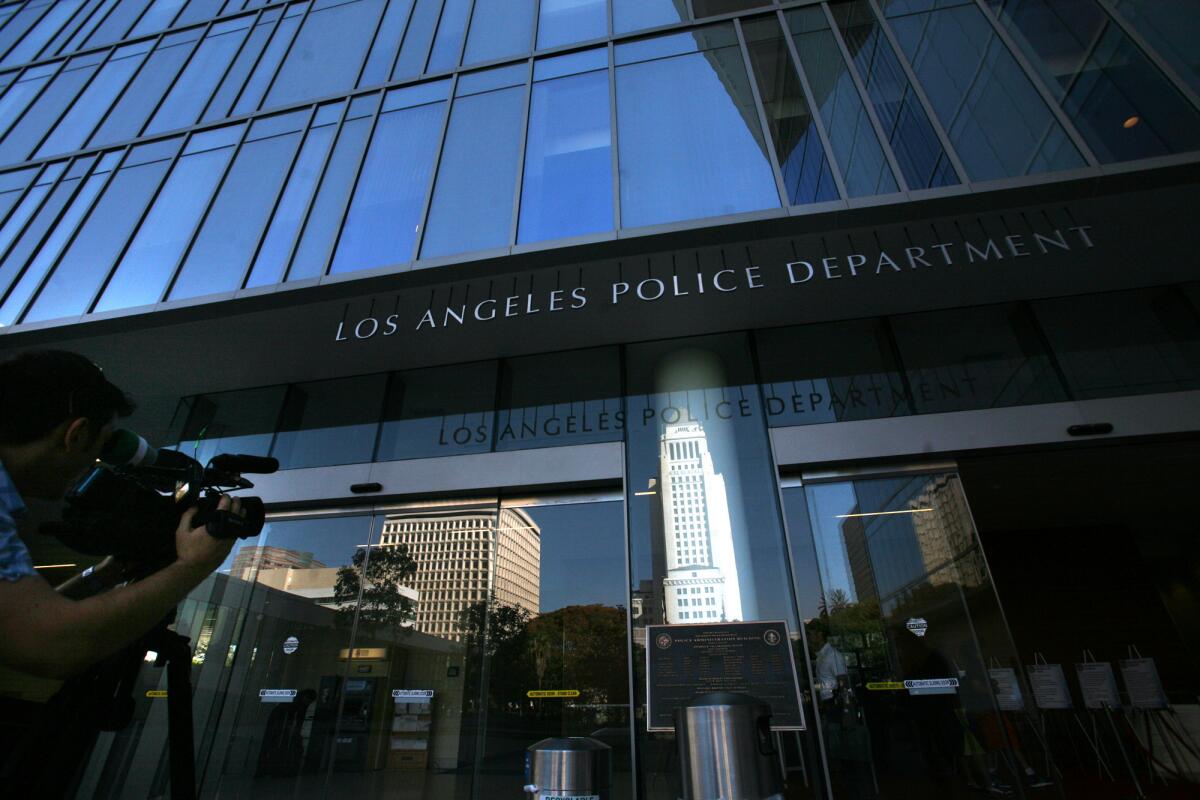
Prosecutors are reviewing allegations of misconduct by four Los Angeles police officers during protests in the city in early June, according to law enforcement officials.
The LAPD also is investigating why some police supervisors told officers to take off their body cameras during the protests, officials said.
No charges had been filed as of Tuesday, but staff in L.A. County Dist. Atty. Jackie Lacey’s Justice System Integrity Division are reviewing the four officers’ actions after being forwarded their names by LAPD internal affairs detectives, officials said Tuesday. The division investigates police misconduct.
Josh Rubenstein, an LAPD spokesman, said the four officers were involved in an arrest for an alleged curfew violation on June 1 in Van Nuys. The city was under nightly curfews at the time in response to widespread protests of police brutality against Black people, and due to other acts of arson, burglary, and vandalism at and around the protests, including that day in the Van Nuys area.
Rubenstein declined to name the officers, citing rules against the release of personnel information, but said each had been assigned to non-field duties pending the resolution of the case.
Lacey’s office confirmed a case involving four officers has been presented to prosecutors, and is “under review.”
Rubenstein said internal affairs had initially reviewed the actions of 10 officers involved in the incident, though only four were referred to Lacey’s office.
LAPD Chief Michel Moore has previously said that several officers were under investigation by internal affairs after they surrounded and smashed the window of a car in Van Nuys on June 1. Rubenstein said he believed that is the same incident that prompted the referral to Lacey’s office.
The elevation of the case to Lacey’s office is the most serious outcome to date from hundreds of complaints about police misconduct during the unrest.
Police released information about the referral Tuesday after a commander made a passing reference to it during a Police Commission meeting and The Times asked for details.
LAPD Deputy Chief Robert Marino, who oversees internal affairs, told the Police Commission that his office had received hundreds of complaints about officers’ protest conduct via calls and emails, and that nearly 100 individual officers stood accused of some violation in total — including 55 instances of alleged excessive force.
Only the one case had been referred to Lacey’s office, he said, though other investigations are ongoing. Nearly 1,000 hours of body-worn camera footage has been reviewed by internal affairs investigators, he said.
The investigations are all being shared with the department’s inspector general, Marino said, and the department has said it is conducting a comprehensive after-action review of the protests and its handling of them. The Police Commission also hired the National Police Foundation to conduct another review.
The actions of police during the protests are the subject of several lawsuits alleging excessive force, including a substantial class-action lawsuit that alleges police badly injured protesters using projectiles and batons. An investigation by The Times found that many protesters were injured, some seriously, as a result of police efforts to clear large gatherings that police had labeled unlawful.
LAPD used violence to quell protests over police brutality, using batons and ‘less lethal’ bullets in ways that probably violated protocols.
Police have released body-camera footage from several of those incidents, showing intense standoffs between protesters and police on skirmish lines. One video showed a protester kick an officer before being shot with a projectile in his groin, which ruptured one of his testicles. Another video showed a protester standing some distance from police with his hands in the air being shot in the head.
After Commissioner Dale Bonner asked Tuesday about the existence of body-worn camera footage from the skirmish lines, Marino said that his investigators reviewing complaints of misconduct had identified some instances where officers’ cameras were off.
Marino said that, by department policy, officers on the skirmish lines should have had their cameras on, but some had been in the field for extended periods of time and the batteries on their cameras had been drained.
“Officers have been out on that skirmish line for multiple hours where their body-worn camera is no longer holding that charge or being activated,” Marino said.
Most cameras in use by the department have a battery life of 12 hours.
Department policy states that officers whose cameras are not working should report that to a supervisor and get a new camera before returning to the streets. However, officials have said that wasn’t possible during the protests.
“The dynamic and changing nature of the civil unrest required officers to maintain their positions on the skirmish line for extensive periods of time without the ability to leave their posts,” an LAPD spokeswoman said in July.
In other instances, “some of the officers were directed by their supervisor to secure their cameras in their vehicles due to concerns of the cameras being knocked off their uniforms during encounters with protesters,” the spokeswoman said.
The LAPD is being sued for violence against protesters — again. The department committed to policy changes after incidents in 2000 and 2007.
On Tuesday, Rubenstein said the fact that the entire department was mobilized during the unrest — forcing officers to remain on their posts at the end of their shifts — showed the need for officers on the streets and made it “impractical to remove an officer from a skirmish line solely because of a dead battery in a camera.”
However, supervisors should not have told officers to leave their cameras in their cars, Rubenstein said — and the department is investigating those directives as violations of policy and to determine why they were given.
Marino did not say whether his investigators had identified any instances where officers had deliberately turned off their cameras when they were still functional. Rubenstein said he did not know if any deliberate shutoffs had been identified.
More to Read
Start your day right
Sign up for Essential California for news, features and recommendations from the L.A. Times and beyond in your inbox six days a week.
You may occasionally receive promotional content from the Los Angeles Times.
